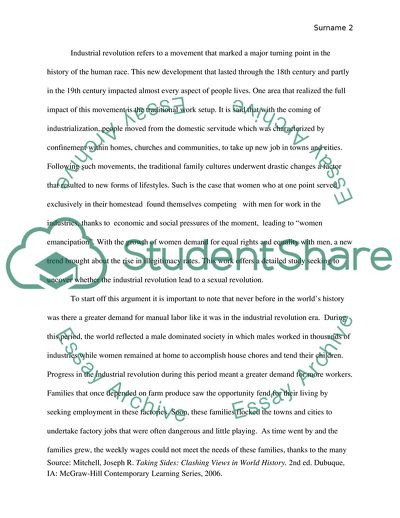Cite this document
(Did the Industrial Revolution Lead to a Sexual Revolution Essay Example | Topics and Well Written Essays - 1750 words, n.d.)
Did the Industrial Revolution Lead to a Sexual Revolution Essay Example | Topics and Well Written Essays - 1750 words. https://studentshare.org/history/1844883-did-the-industrial-reovution-lead-to-a-sexual-revolution
Did the Industrial Revolution Lead to a Sexual Revolution Essay Example | Topics and Well Written Essays - 1750 words. https://studentshare.org/history/1844883-did-the-industrial-reovution-lead-to-a-sexual-revolution
(Did the Industrial Revolution Lead to a Sexual Revolution Essay Example | Topics and Well Written Essays - 1750 Words)
Did the Industrial Revolution Lead to a Sexual Revolution Essay Example | Topics and Well Written Essays - 1750 Words. https://studentshare.org/history/1844883-did-the-industrial-reovution-lead-to-a-sexual-revolution.
Did the Industrial Revolution Lead to a Sexual Revolution Essay Example | Topics and Well Written Essays - 1750 Words. https://studentshare.org/history/1844883-did-the-industrial-reovution-lead-to-a-sexual-revolution.
“Did the Industrial Revolution Lead to a Sexual Revolution Essay Example | Topics and Well Written Essays - 1750 Words”. https://studentshare.org/history/1844883-did-the-industrial-reovution-lead-to-a-sexual-revolution.


